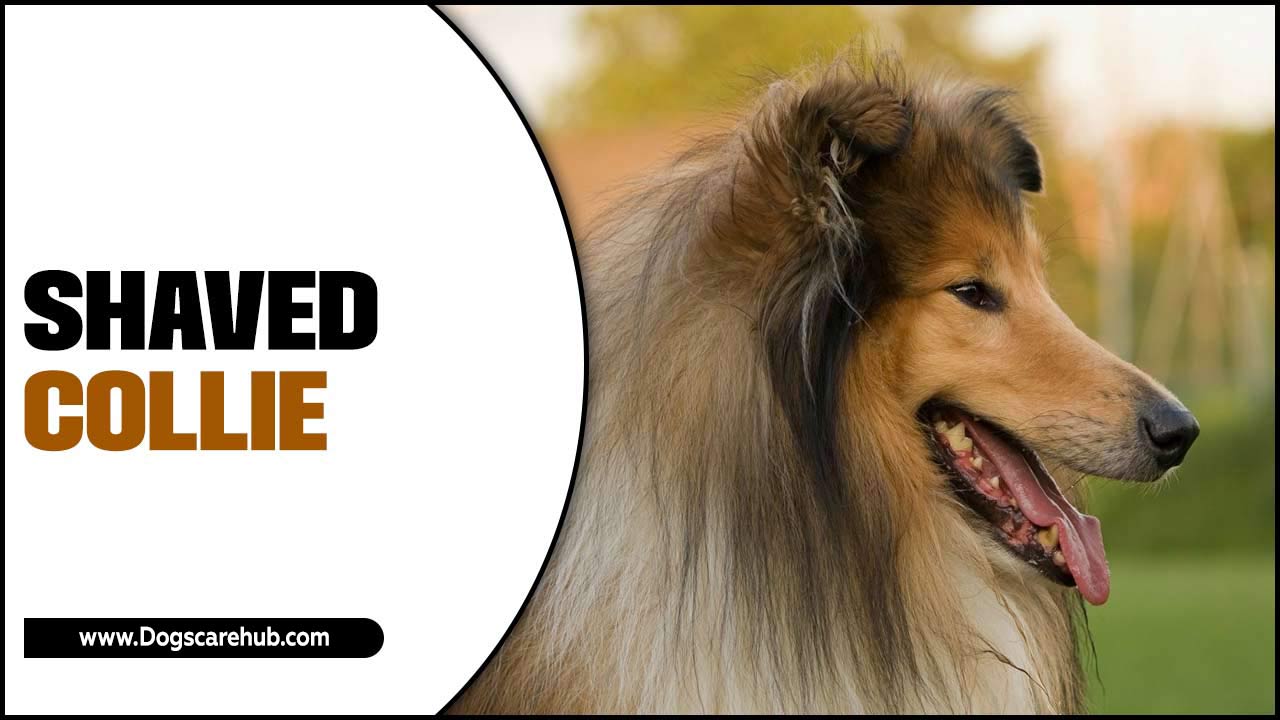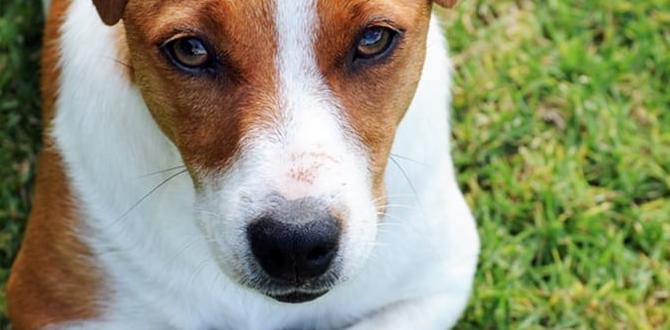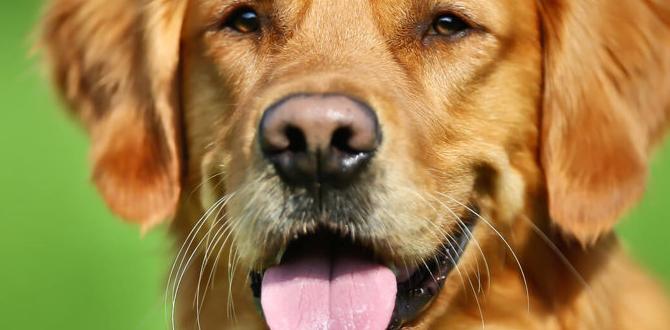Correct dog misbehavior training involves understanding the root cause of the behavior and implementing positive, consistent reinforcement. Genius solutions focus on proactive management, clear communication, and building a strong bond with your dog, turning challenges into opportunities for growth and a happier life together.
Oh, the joys of dog ownership! We welcome our furry friends into our homes with open hearts, dreaming of happy walks and cozy cuddles. But sometimes, those dreams hit a little snag. You know the feeling – your dog is chewing your favorite shoes, barking at everything that moves, or having accidents when they shouldn’t. It can be frustrating, and even a bit disheartening, when your beloved pup isn’t behaving as you’d hoped. But don’t worry! You’re not alone, and these common misbehaviors are usually fixable. This guide is here to offer you simple, effective, and truly genius solutions to help you navigate your dog’s misbehavior training with confidence and a whole lot of love.
Understanding Why Dogs Misbehave
Before we dive into solutions, it’s super important to understand that dogs don’t misbehave out of spite. They’re not trying to make your life difficult! Often, what we see as “misbehavior” is actually a dog trying to communicate something, or it’s a sign that their needs aren’t being met. Think of it like this: if a child is acting out, they might be hungry, tired, or seeking attention. Dogs are no different!
Common underlying reasons for misbehavior include:
- Boredom and Lack of Stimulation: A dog with pent-up energy and nothing to do will find its own entertainment – usually in ways we don’t appreciate (hello, shredded couch!).
- Fear or Anxiety: Loud noises, new situations, or past negative experiences can lead to fearful behaviors like excessive barking, hiding, or even aggression.
- Lack of Training and Structure: Dogs thrive on routine and clear boundaries. Without them, they can become confused and unsure of what’s expected.
- Medical Issues: Sometimes, a sudden change in behavior can be a sign of an underlying health problem. It’s always wise to rule this out first.
- Attention Seeking: Dogs crave our interaction. If they learn that misbehaving gets them attention (even negative attention), they’ll repeat the behavior.
- Unmet Physical Needs: Not enough exercise or potty breaks can lead to restless behavior and accidents.
Genius Solution #1: Proactive Management is Key
The phrase “an ounce of prevention is worth a pound of cure” is especially true in dog misbehavior training. Instead of waiting for your dog to do something wrong and then trying to correct it, let’s get ahead of the game! Proactive management means setting up your dog’s environment and your routine so that misbehavior is less likely to happen in the first place.
Managing the Environment
Think about your dog’s typical “trouble spots.” If your dog chews on furniture when you’re not looking, you need to make the furniture less accessible or less appealing. This could mean:
- Using baby gates or crates: Temporarily block access to certain areas or provide a safe space for your dog when unsupervised.
- Removing temptations: Store shoes and other chewables out of reach.
- Dog-proofing your home: Just like with a toddler, secure electrical cords, toxic plants, and anything else that could be a hazard.
Managing Your Routine
A predictable routine helps dogs feel secure and understand what to expect. This includes regular feeding times, potty breaks, exercise, and training sessions. When there are fewer surprises and more structure, dogs tend to be calmer and more settled.
Genius Solution #2: Understand and Redirect Barks and Chewing
Barking and chewing are natural dog behaviors, but they can become problematic when excessive or destructive. The key isn’t to stop the behavior entirely, but to redirect it appropriately.
Decoding the Bark
Why is your dog barking? Is it:
- Alert barking: At visitors, the mail carrier, or other sounds.
- Boredom barking: To get attention or express frustration.
- Fearful barking: At something that scares them.
- Excitement barking: When greeting people or other dogs.
Once you identify the trigger, you can work on solutions. For alert barking, you can try desensitizing your dog to triggers by gradually exposing them to sounds at a low volume and rewarding calm behavior. Management is also key here; if you know the mail carrier comes at 2 PM, ensure your dog is occupied or in a quiet room during that time.
Channeling the Chew
Chewing is a natural instinct for dogs, especially puppies who are teething. It’s also a way for adult dogs to relieve stress or boredom. Instead of punishing chewing on things you don’t want them to chew, provide plenty of appropriate chew toys. Rotate these toys to keep them interesting. When you catch your dog chewing something they shouldn’t, calmly take it away and immediately offer them one of their own chew toys, praising them when they engage with it.
For destructive chewing, more exercise and mental stimulation are often needed. A tired dog is a good dog!
Genius Solution #3: Potty Training Success Through Consistency
Potty training accidents are a common frustration for new dog owners. Remember, consistency and positive reinforcement are your best friends here. The goal is to teach your dog where and when it is appropriate to eliminate.
The Step-by-Step Approach
- Frequent Potty Breaks: Take your puppy or new dog out first thing in the morning, after waking from naps, after playing, after eating or drinking, and right before bedtime. For puppies, this might mean every 1-2 hours initially.
- Choose a Designated Spot: Always take your dog to the same area outside. The familiar scent will encourage them to go.
- Use a Cue Word: As your dog is eliminating, say a cue word like “Go potty” or “Be good.” This helps them associate the action with the word.
- Reward Lavishly: The moment they finish, praise them enthusiastically and give them a high-value treat (something extra special they only get for potty success!). This positive reinforcement is crucial for learning.
- Supervise Closely Indoors: Watch your dog like a hawk when they are inside. If you see them sniffing around, circling, or heading towards a usual accident spot, interrupt them by gently picking them up or calling them to you and immediately take them outside.
- Clean Accidents Thoroughly: Use an enzymatic cleaner designed for pet messes. Regular household cleaners might not fully remove the odor, and your dog could be drawn back to the same spot. You can learn more about effective cleaning from the ASPCA.
When to Be Extra Vigilant
Certain times require extra potty breaks and vigilance:
- After waking up (morning and naps)
- after meals or significant amounts of water
- After playtime or excitable periods
- Just before bedtime
- When transitioning to a new environment
Genius Solution #4: Leash Manners Made Easy
A dog that pulls on the leash can turn a pleasant walk into a tug-of-war. Good leash manners are essential for safety and enjoyment! The core concept here is teaching your dog that walking politely by your side is rewarding.
Tools to Help
While training is paramount, some tools can make the process smoother. Remember, these are aids, not replacements for training:
| Tool | Description | Best Use |
|---|---|---|
| Standard Leash | A 4-6 foot nylon or leather leash. | General walking and training. |
| Front-Clip Harness | A harness with a D-ring on the chest. When the dog pulls, it gently turns them back towards you. | Dogs that pull strongly; great for smaller breeds or those with neck sensitivities. |
| Head Halter/Gentle Leader | Fits over the dog’s muzzle and behind the ears, offering control over the head. | Large, strong pullers; requires careful introduction and fitting. |
| No-Pull Harness (Back Clip Focused) | Some harnesses with more secure back clips and wider straps can offer better weight distribution than a standard collar. | Mild to moderate pulling, especially if front-clip is uncomfortable for the dog. |
Training Technique: Stop, Start, Reward
- Start with Awareness: If your dog pulls ahead, simply stop walking. Don’t yank or pull back. Just become a tree.
- Reward Loose Leash: The moment the leash goes slack and your dog is by your side, start walking again.
- Keep Your Dog Engaged: Use high-value treats to reward your dog for staying near you and for looking at you. Toss a treat forward if they are lagging, or reward them when they check in with you.
- Teach a “Heel” or “With Me” Cue: Once they understand loose-leash walking, you can introduce a command for them to walk precisely by your side.
Patience is key! It takes time for your dog to learn this new skill.
Genius Solution #5: Socialization and Fear Desensitization
Many behavioral issues, such as fearfulness, reactivity, and aggression, stem from a lack of proper socialization or negative experiences. Socialization is the process of exposing your dog to various sights, sounds, people, and other animals in a positive way, especially during their critical developmental periods.
The Importance of Early Socialization
For puppies, the critical socialization window closes around 14-16 weeks of age. During this time, positive experiences are vital. According to the American Kennel Club, well-socialized puppies are less likely to develop fear-based behavioral problems later in life.
Desensitization and Counter-Conditioning for Fear
If your dog is already fearful or reactive, don’t push them into overwhelming situations. Instead, use desensitization and counter-conditioning:
- Desensitization: Gradually expose your dog to the trigger (e.g., another dog, a loud noise) at a distance or intensity where they don’t react fearfully.
- Counter-Conditioning: Pair the presence of the trigger with something positive, like high-value treats or a favorite toy. The goal is to change your dog’s emotional response from fear or anxiety to positive anticipation.
For example, if your dog is scared of men with hats, start by showing them a hat from across the room while giving them treats. As they get more comfortable, you can slowly decrease the distance or have a man in a hat stand further away, always staying below their reactivity threshold. If your dog shows signs of stress (lip licking, yawning, whale eye, tucked tail), you’ve gone too fast and need to back up.
Genius Solution #6: Positive Reinforcement for Good Behavior
This might be the most genius solution of all! Instead of focusing solely on correcting “bad” behavior, let’s heavily focus on rewarding “good” behavior. Positive reinforcement means adding something the dog likes (like treats, praise, or a favorite toy) immediately after they perform a desired action. This makes them more likely to repeat that action. Training methods that rely on punishment can create fear and anxiety, damaging your bond and potentially leading to worse behaviors.
Key Principles of Positive Reinforcement
- Timing is Everything: The reward must come within seconds of the desired behavior for your dog to connect the two.
- Value of the Reward: Use high-value rewards that your dog truly loves, especially when teaching new behaviors or working through challenges.
- Consistency: Everyone in the household should use the same cues and reward system.
- Clear Cues: Use short, distinct verbal cues for commands (e.g., “Sit,” “Stay,” “Come”).
- Make it Fun! Training should be a positive experience for both you and your dog.
When to Utilize Positive Reinforcement
You can use positive reinforcement for almost anything:
- Rewarding your dog for settling calmly when guests arrive.
- Praising and treating them for not barking at the mail carrier.
- Giving them a fantastic chew toy when they are showing signs of restlessness.
- Celebrating when they come to you when called, even if they were previously distracted.
Genius Solution #7: Addressing Separation Anxiety
Dogs are social creatures, and for some, being left alone for even short periods can trigger intense anxiety. Signs include destructive chewing, excessive barking or howling, house soiling, and pacing.
Building Independence Gradually
If your dog suffers from separation anxiety, the goal is to help them feel more comfortable and confident when you’re not there. This is a marathon, not a sprint!
- Practice “Alone Time” in Small Doses: Start by leaving your dog for just a few seconds, then return before they show signs of distress. Gradually increase the duration as your dog becomes more relaxed.
- Create a Safe Haven: A comfortable crate or a designated “safe room” with their favorite toys and a cozy bed can help.
- Provide Engaging Toys: Puzzle toys or Kongs filled with long-lasting treats can keep your dog occupied and mentally stimulated while you’re away.
- Ignore “Greeting Rituals”: When you leave or arrive home, keep greetings low-key. Avoid long, emotional goodbyes or hellos, as this can heighten their anxiety about your departure or return.
- Exercise and Mental Stimulation: A tired dog is less likely to be anxious. Ensure your dog gets enough physical activity and mental challenges throughout the day.
For severe separation anxiety, you may need to consult with a certified professional dog trainer or a veterinary behaviorist. Resources like the American Veterinary Society of Animal Behavior (AVSAB) offer guidance on seeking professional help.
Troubleshooting Common Misbehaviors
Let’s put these genius solutions into practice by looking at a few common scenarios:
Scenario: Jumping Up on People
- Root Cause: Excitement, seeking attention, or learned behavior.
- Genius Solution:
- Ignore the Jump: When your dog jumps, turn away, cross your arms, and refuse to make eye contact or speak.
- Reward Calmness: As soon as all four paws are on the floor, turn back and praise/treat them.
- Teach an Alternative: Train a solid “Sit” command. Ask them to sit before greeting people.
- Manage Arrivals: Keep your dog on a leash or behind a gate during busy arrivals until they can greet calmly.
Scenario: Nipping or Play Biting
- Root Cause: Teething (puppies), play drive, or overexcitement.
- Genius Solution:
- “Ouch!” and Withdraw: If your dog nips too hard, give a sharp “Ouch!” and immediately withdraw your hand or stop playing.
- Redirect to a Toy: If they continue to mouth, offer an appropriate chew toy instead.
- “Chill Out” Time: If nipping persists, calmly put your dog in their crate or a safe spot for a short “time out” (30-60 seconds) to let them regain composure.
- Teach Bite Inhibition: Gradually increase the pressure of your dog’s bite during play, each time yelping and withdrawing. This teaches them how hard is “too hard.”
Scenario: Digging Holes in the Yard
- Root Cause: Boredom, instinct (hunting/burying), seeking coolness, or escape.
- Genius Solution:
- Increase Exercise & Mental Stimulation: Ensure they have enough physical activity and puzzle toys to prevent boredom-driven digging.
- Provide an Approved Digging Area: Create a designated “dig pit” filled with sand or loose soil and bury toys or treats there. Reward digging only in this spot.
- Supervise and Redirect: If you catch them digging inappropriately, calmly interrupt them and redirect them to their dig pit.
- Address Escape Motives: If digging is to escape, reinforce the fence or address the underlying anxiety.
Here’s a quick look at common troublesome behaviors and their solutions:
| Misbehavior | Likely Cause | Genius Solution Focus |
|---|---|---|
| Excessive Barking | Boredom, alarm, anxiety, attention-seeking | Management, desensitization, positive reinforcement for quiet |
| Destructive Chewing | Boredom, teething, anxiety, lack of appropriate outlets | Provide adequate chew toys, exercise, mental stimulation, crate training |
| House Soiling | Incomplete potty training, medical issues, anxiety | Consistent potty schedule, positive reinforcement, medical check, thorough cleaning |
| Jumping Up | Excitement, seeking attention | Ignore jumping, reward four-on-the-floor, teach “Sit” |
| Pulling on Leash | Lack of training, excitement, strong prey drive | Stop, start, reward slack leash; use appropriate tools |
| Aggression/Reactivity | Fear, past trauma, resource guarding, poor socialization | Professional guidance, desensitization & counter-conditioning, management |
When to Seek Professional Help
While many misbehaviors can be managed and improved with patience and the right techniques, there are times when professional help is essential. Don’t hesitate to reach out to:
- Your Veterinarian: Always the first step to rule out any underlying medical conditions that could be causing behavioral changes.
- Certified Professional Dog Trainer (CPDT-KA/SA): For help with obedience, basic manners, and general behavioral issues. Look for trainers using positive reinforcement methods.
- Veterinary Behaviorist (DACVB): For complex or severe issues like aggression, extreme anxiety, or phobias. They have advanced training in animal behavior and can prescribe medication if necessary.
Seeking professional guidance is a sign of responsible pet ownership, not a failure. They can provide tailored strategies and support that are specific to your dog and your situation.
Frequently Asked Questions
Q1: My dog chews everything when I leave. What is the best way to stop it?
A1: This is common and usually stems from boredom or separation anxiety. Start by ensuring your dog gets plenty of physical exercise and mental stimulation before you leave. Provide a variety of safe, engaging chew toys (like puzzle toys or stuffed Kongs) specifically for when you are gone. Implement crate training if your dog is comfortable with it, as it can provide a safe space. If the chewing is severe or accompanied by other signs of distress, it’s a strong indicator of separation anxiety, and professional guidance is recommended.
Q2: How do I stop my dog from barking excessively at the door?
A2: First, manage the situation by preventing your dog from practicing the behavior. Use a baby gate or keep them in another room when you expect visitors. Desensitize them to the sound of the doorbell or knock by practicing with a friend or family member, rewarding your dog with treats for being quiet or calm. You can also teach a “go to your mat” or “sit” command for when the doorbell rings, rewarding them for complying instead of rushing the door and barking.
A3: Is punishment ever effective for dog misbehavior?
A3: While punishment might suppress a behavior in the moment, it rarely addresses the root cause and can lead to serious negative consequences. It can increase fear and anxiety, damage your relationship with your dog, and even lead to aggression. Focus on positive reinforcement and understanding why the behavior is happening instead. Positive methods build trust and create a happy, well-behaved dog.
Q4: My puppy is having accidents inside. How long does potty training usually take?
A4: Potty training timelines vary greatly depending on the puppy’s age, breed, and consistency of training. Some puppies are reliably housetrained within a few weeks, while for others it can take several months. The key is patience, consistency, frequent potty breaks, and rewarding success. Don’t get discouraged; accidents are normal. Keep up with your routine and positive reinforcement.</p
Q5: My dog is showing aggression towards other dogs at the park. What should I do?
A5: This is a serious concern and requires caution. Aggression at dog parks is often a sign of fear, poor socialization, or underlying anxiety. It’s best to stop going to dog parks immediately to prevent further negative experiences. Consult with a qualified veterinary behaviorist or a certified professional dog trainer who specializes in aggression. They can help you identify the triggers, develop a safe management plan, and implement a behavior modification program using desensitization and counter-conditioning.
Q6: How much exercise does my dog really need?
A6: Exercise needs vary significantly by breed, age, and individual energy levels. A general guideline is that most adult dogs need at least 30 minutes of vigorous exercise per day, but many higher-energy breeds require an hour or more. Mental stimulation, such as training or puzzle toys, is also crucial. Lack of adequate exercise is a common contributor to many misbehaviors like destructiveness and excessive barking.
Conclusion
When it comes to correcting dog misbehavior, remember that your dog isn’t trying to be “bad.” They are most likely communicating a need, feeling an emotion, or simply lacking the proper guidance and structure. By embracing proactive management, understanding the root causes of their actions, and applying positive, consistent reinforcement, you’re not just correcting misbehavior – you’re building a deeper bond with your canine companion. These genius solutions focus on building trust, clear communication, and a happy, harmonious life for both of you. Celebrate the small victories, be patient with setbacks, and enjoy the incredible journey of learning and growing with your dog. You’ve got this!
Meet Elyse Colburn, the devoted canine companion and storyteller behind the enchanting world of “Tales, Tails, and Adventures Unleashed.” A passionate dog enthusiast with a heart full of paw prints, Elyse Colburn shares heartwarming tales and insightful adventures, celebrating the joy, loyalty, and endless antics that make every dog a true hero. Join Elyse Colburn on this tail-wagging journey, where every post is a love letter to our four-legged friends.






